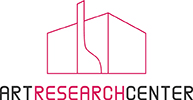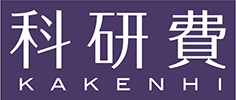Japanese Works
Pleasure is
when you understand
all by yourself
a book that people
find impenetrable Tachibana Akemi, (1812-1868)
translated by Haruo Shirane

Japan possesses an exceptionally rich heritage of written culture founded in its long literary tradition and history of paper production and in its connections with the civilizations of neighbouring China and Korea, including the traditions of both Buddhism and Confucianism. The Aston, Satow and Von Siebold Collections at Cambridge University Library are among the most important collections of early Japanese books outside Japan. William George Aston (1841-1911), Ernest Mason Satow (1843-1929) and Heinrich von Siebold (1852-1908) were great pioneers of Japanese studies. Both Aston and Satow served as British diplomatic staff in Japan, while Heinrich von Siebold, the second son of Philipp Franz von Siebold, worked as an antiquarian, collector and translator.
These pioneer Japanologists traveled to Japan in the 1860s and found there an already well-developed and rich print culture. Traditional Japanese books were abundant and relatively cheap when they and other Western scholars first started to collect them. Cambridge University Library received most of its early Japanese books, over 2,500 items, in 1911-1913. In 1911, 721 Japanese books were presented from Von Siebold's collection, and later that same year, a large amount of Aston's Japanese books were acquired by the library, including Satow's books, for the sum of £250. Satow himself presented 371 volumes in 1912 and another 62 volumes in 1913.
There are two distinctive features in the Library's collection of early Japanese books. First, the collection represents a wide range of the various aspects of early Japanese learning, although Buddhism was predominant in the earlier materials. Second, the collection contains excellent samples of Japan's early print culture, including examples of eighth-century Hyakumantō darani, Japan's earliest surviving printed texts. There are also books published at Mount Koya, early movable type editions (kokatsuji-ban), luxury editions (Saga-bon), woodblock-printed books, and editions printed with wooden movable type (mokkatsuji-ban). The collection includes notable book-form manuscripts as well as important and interesting scrolls. Many of the manuscripts and woodblock printed materials contain simple or elaborate illustrations of historical significance.
A generous donation by Professor Mikiko Ishii allowed the digitization of a first group of materials from our early Japanese collections for the Cambridge Digital Library. A second digitization project is underway in collaboration with the Art Research Center at Ritsumeikan University. Descriptions of Japanese books in the digital library are mainly derived from Hayashi Nozomu and Peter Kornicki: Early Japanese Books in Cambridge University Library: a Catalogue of the Aston, Satow and Von Siebold Collection, a copy of which may be found in the East Asian Reading Room (FD.22.28).



